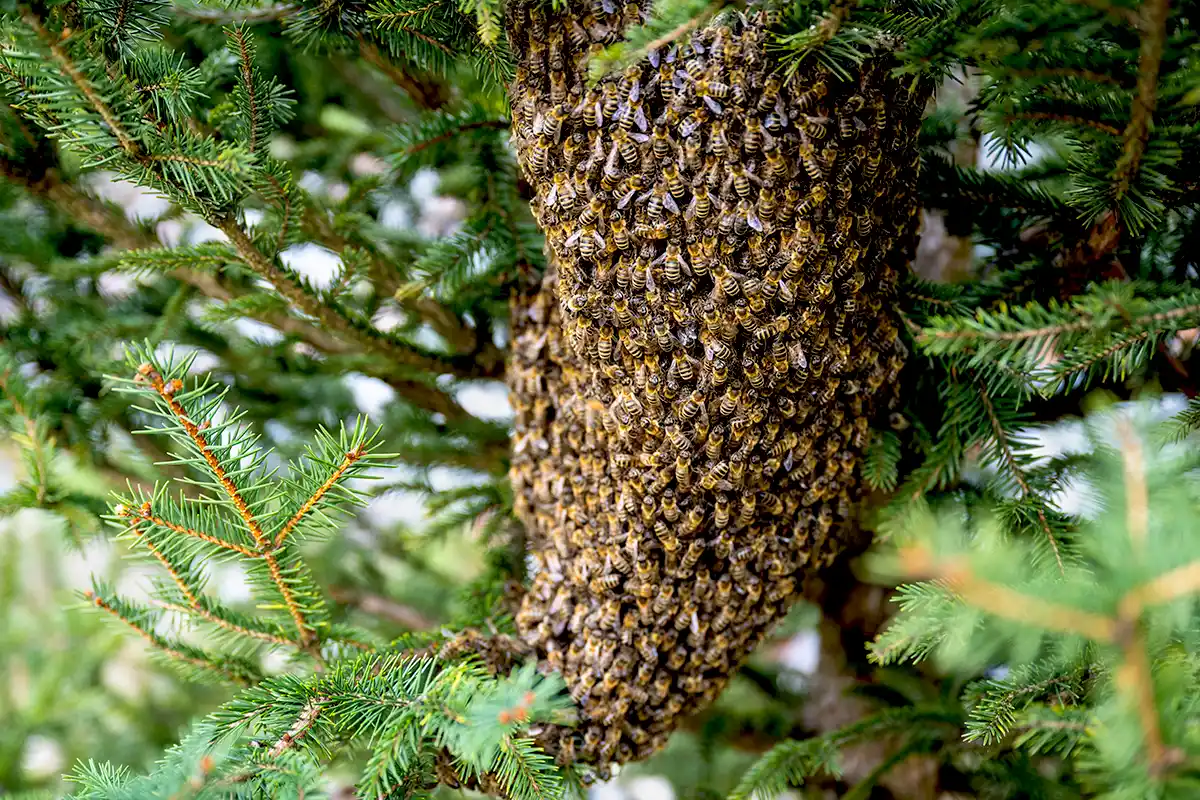
Is There a Swarm Season for Bees in Phoenix, Arizona?
Bees are ubiquitous creatures that play an important role in our ecosystem, especially in a region like the Valley of the Sun. Knowing when they swarm can keep you and your love ones safe while respecting your local bees. As such, swarming is part of a bee’s natural life, but it can also mean surprises for homeowners. Understanding the timing and signs of bee swarms ensures everyone stays safe and bees stay healthy.
What Is Bee Swarming?
Bee swarming is when a large number of bees leave their hive to start a new colony. Typically, this phenomenon occurs when the original hive gets overcrowded or the queen feels her home is too small. During swarming, bees surround the queen, often hanging on trees or buildings. Many people mistake swarms for aggressive bees, but they usually aren’t dangerous if left alone. Swarming helps bee colonies grow and stay healthy, so it’s a natural and necessary process.
Factors Influencing Bee Swarm Seasons in Phoenix, Arizona
Phoenix’s hot desert climate affects when bees swarm. The city’s weather usually has mild winters and hot summers, which impacts bee activity. Plants like mesquite, palo verde, and desert wildflowers bloom at different times of the year, providing nectar and pollen that influence bee behavior.
When Do Bees Typically Swarm in Phoenix?
In Phoenix, swarm activity usually happens in spring and early summer. The best-known swarm months are April and May, right after the weather warms up. That said, bees can swarm anytime from late March to July if conditions are right. In some years, you might see more swarms depending on rainfall, flowering and hive conditions. Because of the desert environment, swarming might be less predictable than in cooler climates.
Signs of a Potential Bee Swarm
There are clear signs that a hive might swarm soon, such as:
- A large number of bees gathering outside the hive entrance.
- Bees hanging as a cluster in nearby trees or on structures.
- The hive appearing crowded or the bees acting restless.
- A queen that has stopped laying eggs or a change in the hive’s behavior.
- Bees “bearding” on the outside, especially during hot days. Bearding is a word used to describe when bees gather at the front of the hive, forming shape that resembles a beard. Bearding is done when there is a need to free up space inside the beehive, which adds more ventilation on a hot day.
If you notice these signs, it’s best to keep a safe distance and avoid disturbing the bees. For homeowners, preventing swarms from taking over your backyard is about managing hive size before it’s too late.
Managing Bee Swarms in Phoenix
- Regularly check hives to catch signs early.
- Provide enough space in hives so bees don’t feel crowded.
- Use swarm traps or “bee boxes” to attract swarms before they settle elsewhere.
- Contact your local bee control and removal expert when a swarm appears nearby.
If you find a swarm on your property, it’s best not to try to remove it yourself. Call professionals who know how to safely handle and relocate bees. This keeps everyone safe and helps the bees settle in a proper hive.
Bees in Phoenix have a fairly predictable swarm season, mostly in spring. Early signs like hanging bees or crowded hives should hint to swarming. In such cases, if you spot a swarm, reach out to trained bee removal professionals such as the Beehive Bee and Wasp Removal to handle it responsibly.